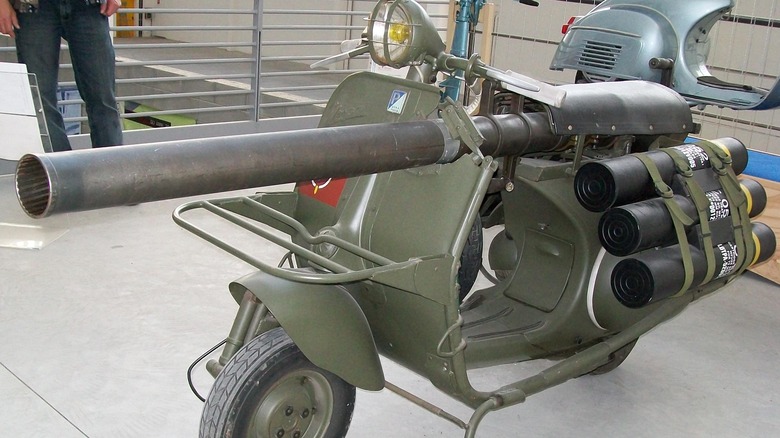The History Behind This Incredible French Bazooka Scooter
Since the advent of armored combat, back during World War I, militaries from around the world have been devising ways to either destroy tanks and armored vehicles in combat or render them combat-ineffective.
In World War II, the U.S. Army developed the now famous Bazooka, a man-portable anti-tank weapon. Its usefulness against tanks is debatable, but the Bazooka was highly effective against other fortified emplacements of Nazi Germany or Imperial Japan. As the war drew to a close, U.S. Army engineers devised another weapon: the 75mm M20 recoilless rifle (not to be confused with the M20 "Super Bazooka)." According to the U.S. Army's Worldwide Equipment Guide, the M20 wasn't a great success in an anti-tank capacity during the Korean War, where it first saw real combat. But it excelled in close support of ground troops and at leveling enemy bunkers.
Normally, the M20 was mounted on a Jeep or fired from a stationary tripod. According to Popular Mechanics, French military engineers, looking for a new lightweight anti-bunker solution for paratroopers, found a way to make the M20 even more portable. They mounted it on an Italian Vespa scooter.
The world's smallest tank killer
The Vespa 150 TAP, as it was called, was essentially a normal 150cc Vespa scooter with a M20 recoilless rifle grafted onto the reinforced frame and painted olive drab. At a total unit cost of $500, It was built from 1956 to 1959 as a paratrooper special, able to be dropped from planes into danger (via Popular Mechanics). The rider straddles the rocket launcher while driving and presumably does their best to not look like they're in a Mr. Bean sketch.
While it may look incredibly strange, Vespa scooters were well regarded for their reliability and ability to go just about anywhere. The M20 was chosen because it was light enough to be man portable, and the launcher itself carried all the mechanical complexity of a metal pipe with a trigger mechanism.
Unlike many wacky weapons intended for combat, the Vespa 150 TAP actually saw action in the 1950s during the Algerian war for independence. While Popular Mechanics reports that it was basically useless against heavily armored Soviet-built tanks, it was highly effective against fortified structures like bunkers and machine-gun nests.
In the world of Cold War weapons, quite a few of them never saw combat. Stylistically, the Vespa 150 TAP could have benefitted from a few more minutes on the drawing board, but in the end, it faithfully served the soldiers that needed it ... even if they looked goofy while riding it.
